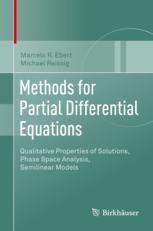

Most ebook files are in PDF format, so you can easily read them using various software such as Foxit Reader or directly on the Google Chrome browser.
Some ebook files are released by publishers in other formats such as .awz, .mobi, .epub, .fb2, etc. You may need to install specific software to read these formats on mobile/PC, such as Calibre.
Please read the tutorial at this link: https://ebookbell.com/faq
We offer FREE conversion to the popular formats you request; however, this may take some time. Therefore, right after payment, please email us, and we will try to provide the service as quickly as possible.
For some exceptional file formats or broken links (if any), please refrain from opening any disputes. Instead, email us first, and we will try to assist within a maximum of 6 hours.
EbookBell Team

4.8
44 reviewsThis book provides an overview of different topics related to the theory of partial differential equations. Selected exercises are included at the end of each chapter to prepare readers for the “research project for beginners” proposed at the end of the book. It is a valuable resource for advanced graduates and undergraduate students who are interested in specializing in this area.
The book is organized in five parts:
In Part 1 the authors review the basics and the mathematical prerequisites, presenting two of the most fundamental results in the theory of partial differential equations: the Cauchy-Kovalevskaja theorem and Holmgren's uniqueness theorem in its classical and abstract form. It also introduces the method of characteristics in detail and applies this method to the study of Burger's equation.
Part 2 focuses on qualitative properties of solutions to basic partial differential equations, explaining the usual properties of solutions to elliptic, parabolic and hyperbolic equations for the archetypes Laplace equation, heat equation and wave equation as well as the different features of each theory. It also discusses the notion of energy of solutions, a highly effective tool for the treatment of non-stationary or evolution models and shows how to define energies for different models.
Part 3 demonstrates how phase space analysis and interpolation techniques are used to prove decay estimates for solutions on and away from the conjugate line. It also examines how terms of lower order (mass or dissipation) or additional regularity of the data may influence expected results.
Part 4 addresses semilinear models with power type non-linearity of source and absorbing type in order to determine critical exponents: two well-known critical exponents, the Fujita exponent and the Strauss exponent come into play. Depending on concrete models these critical exponents divide the range of admissible powers in classes which make it possible to prove quite different qualitative properties of solutions, for example, the stability of the zero solution or blow-up behavior of local (in time) solutions.
The last part features selected research projects and general background material.